Cathy Wu
Noise-Aware Generative Microscopic Traffic Simulation
Aug 10, 2025Abstract:Accurately modeling individual vehicle behavior in microscopic traffic simulation remains a key challenge in intelligent transportation systems, as it requires vehicles to realistically generate and respond to complex traffic phenomena such as phantom traffic jams. While traditional human driver simulation models offer computational tractability, they do so by abstracting away the very complexity that defines human driving. On the other hand, recent advances in infrastructure-mounted camera-based roadway sensing have enabled the extraction of vehicle trajectory data, presenting an opportunity to shift toward generative, agent-based models. Yet, a major bottleneck remains: most existing datasets are either overly sanitized or lack standardization, failing to reflect the noisy, imperfect nature of real-world sensing. Unlike data from vehicle-mounted sensors-which can mitigate sensing artifacts like occlusion through overlapping fields of view and sensor fusion-infrastructure-based sensors surface a messier, more practical view of challenges that traffic engineers encounter. To this end, we present the I-24 MOTION Scenario Dataset (I24-MSD)-a standardized, curated dataset designed to preserve a realistic level of sensor imperfection, embracing these errors as part of the learning problem rather than an obstacle to overcome purely from preprocessing. Drawing from noise-aware learning strategies in computer vision, we further adapt existing generative models in the autonomous driving community for I24-MSD with noise-aware loss functions. Our results show that such models not only outperform traditional baselines in realism but also benefit from explicitly engaging with, rather than suppressing, data imperfection. We view I24-MSD as a stepping stone toward a new generation of microscopic traffic simulation that embraces the real-world challenges and is better aligned with practical needs.
A Roadmap for Climate-Relevant Robotics Research
Jul 15, 2025Abstract:Climate change is one of the defining challenges of the 21st century, and many in the robotics community are looking for ways to contribute. This paper presents a roadmap for climate-relevant robotics research, identifying high-impact opportunities for collaboration between roboticists and experts across climate domains such as energy, the built environment, transportation, industry, land use, and Earth sciences. These applications include problems such as energy systems optimization, construction, precision agriculture, building envelope retrofits, autonomous trucking, and large-scale environmental monitoring. Critically, we include opportunities to apply not only physical robots but also the broader robotics toolkit - including planning, perception, control, and estimation algorithms - to climate-relevant problems. A central goal of this roadmap is to inspire new research directions and collaboration by highlighting specific, actionable problems at the intersection of robotics and climate. This work represents a collaboration between robotics researchers and domain experts in various climate disciplines, and it serves as an invitation to the robotics community to bring their expertise to bear on urgent climate priorities.
When Context Is Not Enough: Modeling Unexplained Variability in Car-Following Behavior
Jul 09, 2025Abstract:Modeling car-following behavior is fundamental to microscopic traffic simulation, yet traditional deterministic models often fail to capture the full extent of variability and unpredictability in human driving. While many modern approaches incorporate context-aware inputs (e.g., spacing, speed, relative speed), they frequently overlook structured stochasticity that arises from latent driver intentions, perception errors, and memory effects -- factors that are not directly observable from context alone. To fill the gap, this study introduces an interpretable stochastic modeling framework that captures not only context-dependent dynamics but also residual variability beyond what context can explain. Leveraging deep neural networks integrated with nonstationary Gaussian processes (GPs), our model employs a scenario-adaptive Gibbs kernel to learn dynamic temporal correlations in acceleration decisions, where the strength and duration of correlations between acceleration decisions evolve with the driving context. This formulation enables a principled, data-driven quantification of uncertainty in acceleration, speed, and spacing, grounded in both observable context and latent behavioral variability. Comprehensive experiments on the naturalistic vehicle trajectory dataset collected from the German highway, i.e., the HighD dataset, demonstrate that the proposed stochastic simulation method within this framework surpasses conventional methods in both predictive performance and interpretable uncertainty quantification. The integration of interpretability and accuracy makes this framework a promising tool for traffic analysis and safety-critical applications.
Markov Regime-Switching Intelligent Driver Model for Interpretable Car-Following Behavior
Jun 17, 2025Abstract:Accurate and interpretable car-following models are essential for traffic simulation and autonomous vehicle development. However, classical models like the Intelligent Driver Model (IDM) are fundamentally limited by their parsimonious and single-regime structure. They fail to capture the multi-modal nature of human driving, where a single driving state (e.g., speed, relative speed, and gap) can elicit many different driver actions. This forces the model to average across distinct behaviors, reducing its fidelity and making its parameters difficult to interpret. To overcome this, we introduce a regime-switching framework that allows driving behavior to be governed by different IDM parameter sets, each corresponding to an interpretable behavioral mode. This design enables the model to dynamically switch between interpretable behavioral modes, rather than averaging across diverse driving contexts. We instantiate the framework using a Factorial Hidden Markov Model with IDM dynamics (FHMM-IDM), which explicitly separates intrinsic driving regimes (e.g., aggressive acceleration, steady-state following) from external traffic scenarios (e.g., free-flow, congestion, stop-and-go) through two independent latent Markov processes. Bayesian inference via Markov chain Monte Carlo (MCMC) is used to jointly estimate the regime-specific parameters, transition dynamics, and latent state trajectories. Experiments on the HighD dataset demonstrate that FHMM-IDM uncovers interpretable structure in human driving, effectively disentangling internal driver actions from contextual traffic conditions and revealing dynamic regime-switching patterns. This framework provides a tractable and principled solution to modeling context-dependent driving behavior under uncertainty, offering improvements in the fidelity of traffic simulations, the efficacy of safety analyses, and the development of more human-centric ADAS.
Reimagining Urban Science: Scaling Causal Inference with Large Language Models
Apr 15, 2025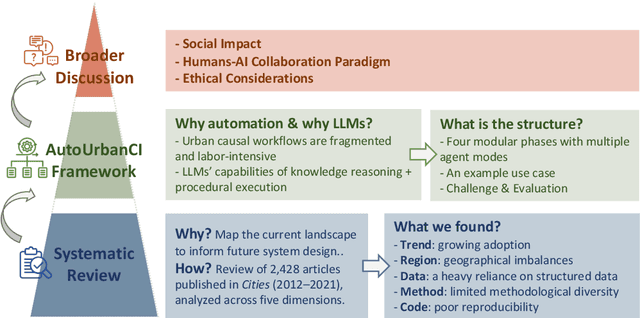
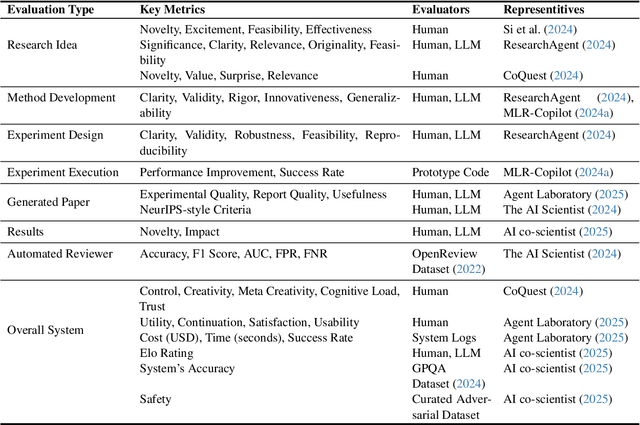
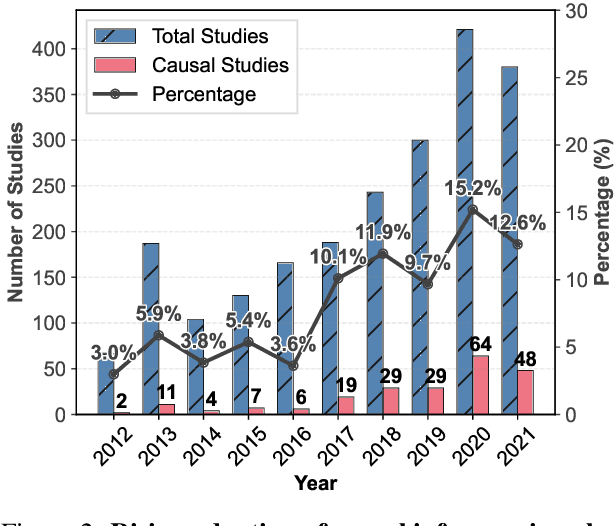
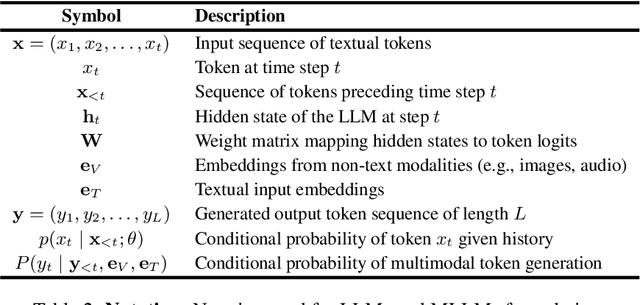
Abstract:Urban causal research is essential for understanding the complex dynamics of cities and informing evidence-based policies. However, it is challenged by the inefficiency and bias of hypothesis generation, barriers to multimodal data complexity, and the methodological fragility of causal experimentation. Recent advances in large language models (LLMs) present an opportunity to rethink how urban causal analysis is conducted. This Perspective examines current urban causal research by analyzing taxonomies that categorize research topics, data sources, and methodological approaches to identify structural gaps. We then introduce an LLM-driven conceptual framework, AutoUrbanCI, composed of four distinct modular agents responsible for hypothesis generation, data engineering, experiment design and execution, and results interpretation with policy recommendations. We propose evaluation criteria for rigor and transparency and reflect on implications for human-AI collaboration, equity, and accountability. We call for a new research agenda that embraces AI-augmented workflows not as replacements for human expertise but as tools to broaden participation, improve reproducibility, and unlock more inclusive forms of urban causal reasoning.
RL2Grid: Benchmarking Reinforcement Learning in Power Grid Operations
Mar 29, 2025Abstract:Reinforcement learning (RL) can transform power grid operations by providing adaptive and scalable controllers essential for grid decarbonization. However, existing methods struggle with the complex dynamics, aleatoric uncertainty, long-horizon goals, and hard physical constraints that occur in real-world systems. This paper presents RL2Grid, a benchmark designed in collaboration with power system operators to accelerate progress in grid control and foster RL maturity. Built on a power simulation framework developed by RTE France, RL2Grid standardizes tasks, state and action spaces, and reward structures within a unified interface for a systematic evaluation and comparison of RL approaches. Moreover, we integrate real control heuristics and safety constraints informed by the operators' expertise to ensure RL2Grid aligns with grid operation requirements. We benchmark popular RL baselines on the grid control tasks represented within RL2Grid, establishing reference performance metrics. Our results and discussion highlight the challenges that power grids pose for RL methods, emphasizing the need for novel algorithms capable of handling real-world physical systems.
Learning-Guided Rolling Horizon Optimization for Long-Horizon Flexible Job-Shop Scheduling
Feb 18, 2025Abstract:Long-horizon combinatorial optimization problems (COPs), such as the Flexible Job-Shop Scheduling Problem (FJSP), often involve complex, interdependent decisions over extended time frames, posing significant challenges for existing solvers. While Rolling Horizon Optimization (RHO) addresses this by decomposing problems into overlapping shorter-horizon subproblems, such overlap often involves redundant computations. In this paper, we present L-RHO, the first learning-guided RHO framework for COPs. L-RHO employs a neural network to intelligently fix variables that in hindsight did not need to be re-optimized, resulting in smaller and thus easier-to-solve subproblems. For FJSP, this means identifying operations with unchanged machine assignments between consecutive subproblems. Applied to FJSP, L-RHO accelerates RHO by up to 54% while significantly improving solution quality, outperforming other heuristic and learning-based baselines. We also provide in-depth discussions and verify the desirable adaptability and generalization of L-RHO across numerous FJSP variates, distributions, online scenarios and benchmark instances. Moreover, we provide a theoretical analysis to elucidate the conditions under which learning is beneficial.
NeuralMOVES: A lightweight and microscopic vehicle emission estimation model based on reverse engineering and surrogate learning
Feb 06, 2025



Abstract:The transportation sector significantly contributes to greenhouse gas emissions, necessitating accurate emission models to guide mitigation strategies. Despite its field validation and certification, the industry-standard Motor Vehicle Emission Simulator (MOVES) faces challenges related to complexity in usage, high computational demands, and its unsuitability for microscopic real-time applications. To address these limitations, we present NeuralMOVES, a comprehensive suite of high-performance, lightweight surrogate models for vehicle CO2 emissions. Developed based on reverse engineering and Neural Networks, NeuralMOVES achieves a remarkable 6.013% Mean Average Percentage Error relative to MOVES across extensive tests spanning over two million scenarios with diverse trajectories and the factors regarding environments and vehicles. NeuralMOVES is only 2.4 MB, largely condensing the original MOVES and the reverse engineered MOVES into a compact representation, while maintaining high accuracy. Therefore, NeuralMOVES significantly enhances accessibility while maintaining the accuracy of MOVES, simplifying CO2 evaluation for transportation analyses and enabling real-time, microscopic applications across diverse scenarios without reliance on complex software or extensive computational resources. Moreover, this paper provides, for the first time, a framework for reverse engineering industrial-grade software tailored specifically to transportation scenarios, going beyond MOVES. The surrogate models are available at https://github.com/edgar-rs/neuralMOVES.
IntersectionZoo: Eco-driving for Benchmarking Multi-Agent Contextual Reinforcement Learning
Oct 19, 2024Abstract:Despite the popularity of multi-agent reinforcement learning (RL) in simulated and two-player applications, its success in messy real-world applications has been limited. A key challenge lies in its generalizability across problem variations, a common necessity for many real-world problems. Contextual reinforcement learning (CRL) formalizes learning policies that generalize across problem variations. However, the lack of standardized benchmarks for multi-agent CRL has hindered progress in the field. Such benchmarks are desired to be based on real-world applications to naturally capture the many open challenges of real-world problems that affect generalization. To bridge this gap, we propose IntersectionZoo, a comprehensive benchmark suite for multi-agent CRL through the real-world application of cooperative eco-driving in urban road networks. The task of cooperative eco-driving is to control a fleet of vehicles to reduce fleet-level vehicular emissions. By grounding IntersectionZoo in a real-world application, we naturally capture real-world problem characteristics, such as partial observability and multiple competing objectives. IntersectionZoo is built on data-informed simulations of 16,334 signalized intersections derived from 10 major US cities, modeled in an open-source industry-grade microscopic traffic simulator. By modeling factors affecting vehicular exhaust emissions (e.g., temperature, road conditions, travel demand), IntersectionZoo provides one million data-driven traffic scenarios. Using these traffic scenarios, we benchmark popular multi-agent RL and human-like driving algorithms and demonstrate that the popular multi-agent RL algorithms struggle to generalize in CRL settings.
Towards Foundation Models for Mixed Integer Linear Programming
Oct 10, 2024

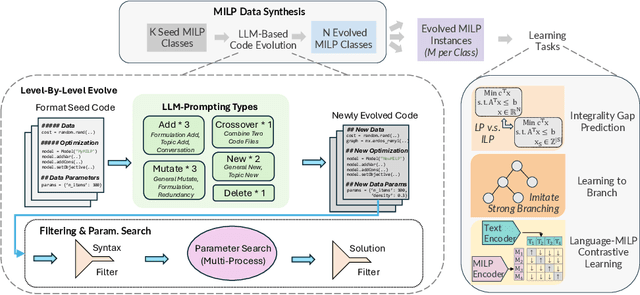
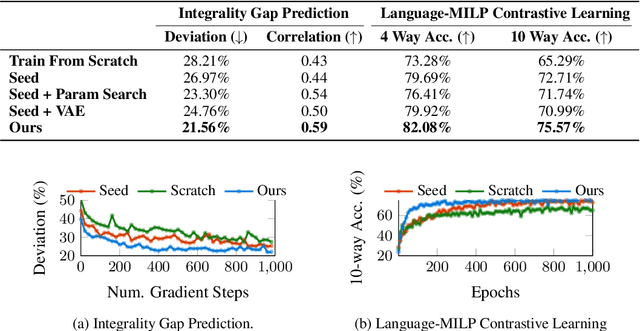
Abstract:Mixed Integer Linear Programming (MILP) is essential for modeling complex decision-making problems but faces challenges in computational tractability and requires expert formulation. Current deep learning approaches for MILP focus on specific problem classes and do not generalize to unseen classes. To address this shortcoming, we take a foundation model training approach, where we train a single deep learning model on a diverse set of MILP problems to generalize across problem classes. As existing datasets for MILP lack diversity and volume, we introduce MILP-Evolve, a novel LLM-based evolutionary framework that is capable of generating a large set of diverse MILP classes with an unlimited amount of instances. We study our methodology on three key learning tasks that capture diverse aspects of MILP: (1) integrality gap prediction, (2) learning to branch, and (3) a new task of aligning MILP instances with natural language descriptions. Our empirical results show that models trained on the data generated by MILP-Evolve achieve significant improvements on unseen problems, including MIPLIB benchmarks. Our work highlights the potential of moving towards a foundation model approach for MILP that can generalize to a broad range of MILP applications. We are committed to fully open-sourcing our work to advance further research.
 Add to Chrome
Add to Chrome Add to Firefox
Add to Firefox Add to Edge
Add to Edge